© 2006 Jan Herca (license Creative Commons Attribution-ShareAlike 4.0)
¶ Religious Sects
¶ The Pharisees
¶ Organization of the Pharisees
The Pharisees, whose name meant “the separated ones” (parûs) or “the holy ones” (qadôs), were the most prominent religious group in Jesus’ time. They called themselves so because they claimed to be “the remnant chosen by God” for salvation, the true messianic community that would be the first to be saved on the Day of Judgment. They were not precisely composed of people from the upper stratum, but rather included all social categories, and even the majority of people with no education. However, their relationship with the scribes was very close. All the Pharisees in the Sanhedrin were scribes, and although there could be non-Pharisee scribes, this was not common. That is why, in Jesus’ time, Pharisee and scribe were words that almost meant the same thing.
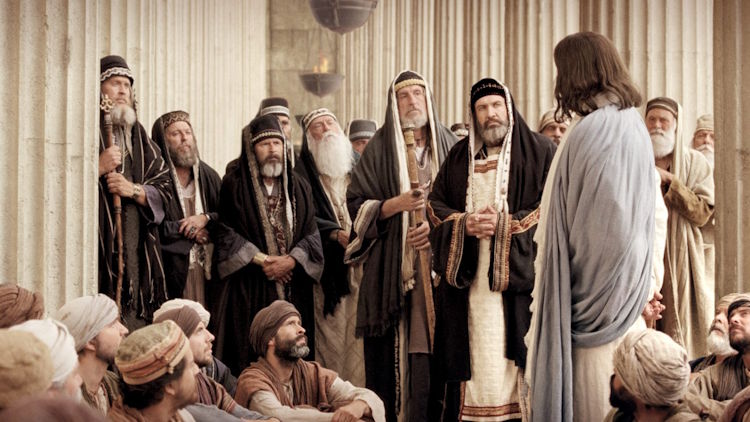
The Pharisees grouped together in Pharisaic communities (habûrôt), which were very closed in nature. One could not be a Pharisee if one did not belong to a habûrôt. In Jerusalem alone, in Jesus’ time, there were several of these communities. They had many public-interest goals and charitable works within them. They were a very important part of Pharisaic thinking, whose basic pillars were: purity, the prescriptions of the law,and good charitable works.
The Pharisaic communities of Jerusalem had specific rules for the admission of members, which demonstrates their unique character. Before admission, there was a probationary period of a month or a year, during which the candidate had to provide proof of his ability to observe the ritual prescriptions. Once the probationary period was over, the candidate pledged to observe the community’s regulations on purity and tithing; in ancient times, this promise took place before a scribe, a member of the community. From then on, the Pharisee was a member (haber) of an association (habûrah).
These associations had their leaders and their assemblies; these, it seems, were linked to a common meal, especially on Friday afternoon, at the beginning of the Sabbath. It seems that the Pharisaic associations sometimes intervened in public, to offer condolences or on the occasion of joyful events. They had their own internal justice; among other things, they could pronounce on the expulsion of a member.
Despite being the largest religious group, this was a rather small one. Their number would have ranged from 6,000 to 7,000 in all of Palestine.
Due to the confusion that often existed regarding the concepts of scribe and Pharisee, the two were often equated with each other, but there are clear differences. Not all scribes are Pharisees. The leaders and influential members of the Pharisee communities were scribes. (Nicodemus was a scribe and a Pharisee, as were the famous Hillel and Gamaliel.) There were also scribes who defended Pharisaic positions without belonging to any habûrah, but they were far fewer than those who did not belong to the Pharisees.
For the most part, members of the habûrôt were not scribes. There were a large number of priests who were Pharisees. There were also members of the clergy who, without scribal training, were Pharisees. It was precisely the members of the clergy who tended to submit with great scrupulosity to the Pharisee’s demands for purity. The priests played a significant role in the Pharisee movement, which is explained by the fact that this movement had its center in the Temple; it attempted to elevate the Scripture’s prescriptions regarding purity for priests in consuming the portion reserved for them to the status of a general norm, valid also for those who were not priests. But these scribes, priests, and Levites constituted only the ruling class of the Pharisees. The lay people who joined the Pharisee communities and committed themselves to observing the Pharisee’s prescriptions regarding tithing and purity were by far the most numerous.
The countless prescriptions regarding commercial relations between Pharisees and non-Pharisees make it possible to better understand the circles that formed the great mass of the Pharisees: merchants, artisans, and peasants were part of the habûrah. In short, the Pharisaic communities were composed mainly of small plebeians, common people without scribal training, serious men ready to dedicate themselves. But, very often, they were harsh and proud toward the great mass, the “people of the country” ('ammê ha-'ares), who did not observe, as they did, the religious prescriptions of the Pharisee scribes; toward these people, the Pharisees considered themselves the true Israel.
Regarding the organization of the habûrah, we must say that they had extraordinary similarities with the Essene communities, since it is not in vain that both movements were formed at the same time (the Maccabean Revolution). Hence, the same admission methods as those of the Essenes apply to the Pharisaic communities: an inspecting scribe (archonte for the Pharisees and mabaqqer for the Essenes) was in charge of examining the candidate. The inspector acquaints him with the secret legal provisions of the community. The candidate takes an entrance oath, is entered on the membership list, and undergoes a two-year trial, at the end of which he is considered a full member. Serious offenses are punished with temporary or permanent exclusion.
¶ Thought of the Pharisees
The Pharisees were concerned with the strict interpretation and observance of the Torah, taking the most radical extreme in applying the precepts in the greatest possible detail. In fact, they held the traditional interpretation of the Torah, the halaká or oral tradition, in as much esteem, if not more, than the written Torah itself. “It is more guilty to teach against the teachings of the scribes than against the Torah itself,” they said.
They believed in the immortality of the soul and the existence of an afterlife, where the righteous are resurrected in a new physical body and the wicked suffer eternal punishment. The resurrection would take place at the end of time, when the messianic kingdom would be established. For them, therefore, performing good works was essential to guaranteeing salvation in the world to come. This aspect of the resurrection distanced them from their bitter adversaries, the Sadducees, who denied this doctrine. Similarly, the Pharisees admitted the existence of angels and demons, while the Sadducees did not.
The doctrine of divine providence and destiny also separated the Pharisees and Sadducees. The Pharisees believed that good works, destiny, and God are necessary for human salvation. They held that the first origin of everything is destiny and the will of God, although they admitted a certain importance to human works. However, the Sadducees absolutely denied destiny and argued that God granted humankind free will to choose between good and evil, so it was human works that caused a favorable or unfortunate fate.
They considered it essential to separate themselves from and avoid contact with people who, acting rashly, contracted ritual impurity due to countless prescriptions derived from the Torah. They tried to associate and live with Pharisees who shared the same principles, remaining within their own communities, avoiding common people as much as possible. The haber did not enter the houses of the plebs, am ha-ares, nor did they accept them as guests, especially because of the impurity (filth) that the plebeian clothes could harbor.
¶ The Sadducees
¶ Organization of the Sadducees
The origin of this group lies in the division that occurred during the Maccabean period. Their name perhaps comes from the fact that they considered themselves the legitimate descendants of Zadok, and therefore eligible for leadership positions.
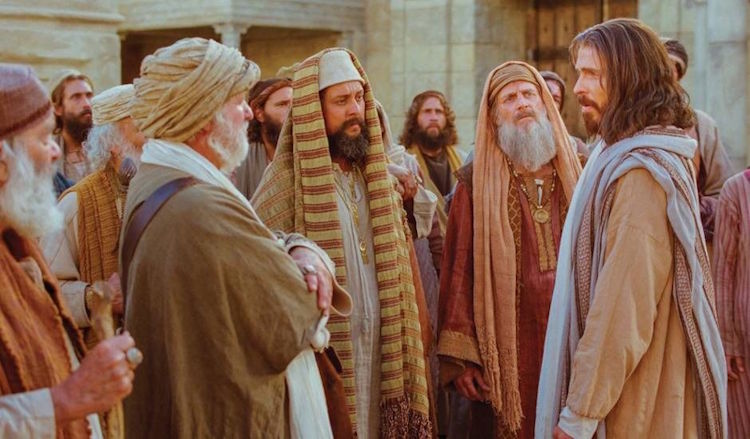
This Sadducee group, apart from the ruling priestly families, also belonged to the leading patrician families of Jerusalem and the lay nobility of the Jewish countryside, whose representatives, along with the priestly aristocracy, constituted part of the high council, the Sanhedrin. But this does not mean that all the priests were Sadducees, since there were also a good number of priests who were Pharisees or who simply did not belong to either faction. Basically, the Sadducean priests were priests belonging to the most distinguished families and constituents of the institutions of power.
The Sadducees occupied a prominent place in Jewish history in the period from the Hasmoneans to the Jewish War. During this period, Judaism was radically transformed by Hellenistic and Babylonian religious influences. Within the Sadducean group, liberal and conservative tendencies were associated: liberals in regard to the acceptance of Hellenistic ways of life,and conservative in terms of preserving the religious status of the temple state founded on law.
The Sadducees formed an organized group. Their followers were not very numerous. They had a tradition (halakah) based on the interpretation of Scripture, a tradition that members were expected to follow in their daily lives. Membership of the Sadducee group, like that of the Pharisees, was limited. Not just anyone could belong.
¶ Thought of the Sadducees
In contrast to the Pharisees, we have already seen some of their beliefs: they denied life after death, the existence of angels and demons, and providence or destiny, doctrines imported from other religions and which barely appeared in Jewish writings. Sadducean theology adhered strictly to the text of the Torah or Pentateuch (the law), particularly with regard to the prescriptions relating to worship and the priesthood; was, therefore, in open opposition to the Pharisees and their oral Halakah, which declared the oral prescriptions on purity relating to priests obligatory, even for pious lay circles. The Sadducees had recorded this theology in a fully developed Halakah founded on exegesis. They adopted a critical stance toward the acceptance of popular customs in worship, fostered by the Pharisees, and advocated the sanctification of the Sabbath in contrast to such customs when the day’s festival fell on a Saturday.
Regarding the subject of purity, they accepted only those prescriptions that emanated directly from the Torah, so their customs were more relaxed, except for the chief priests in charge of the celebration of worship, whose scrupulousness regarding matters of impurity was even greater than that of the Pharisees.
They also rejected the prophetic claims of the circles of the Hasideans and the Essenes. Above all, they condemned the development of apocalypticism and the eschatological ideas linked to it. For them, salvation consisted in the earthly act of purification and becoming part of the people of Israel. Therefore, they never accepted foreign domination, although they were very skillful in establishing adequate commercial ties with them.
Their limitation to the Torah and their rejection of reformist tendencies led them to accept only an earthly vision of man. They similarly rejected the Greek theory of the soul and the Persian hope of resurrection. For them, there was no afterlife. “It’s not in the law,” they said to justify their position. However, they viewed man as free in his actions and responsible for his actions, which should be governed by the law. Hence, they issued severe sentences against offenders, which they applied according to their own penal code. The Pharisees, due to their constant oral reinterpretation of the written law, attempted to adapt and soften the sentences. There was a Sadducean tribunal of chief priests, and they passed sentences according to their own law. There were scribes who were Sadducees, although few.
¶ The Essenes
The Essenes (esseos or essenoi) were a true religious sect that formed following the split with the Hasideans during the Maccabean period. Their number fluctuated around 4,000, scattered throughout Judea and Galilee. They lived in rural communities, avoiding cities and following a way of life that had already been taught to the Greeks by Pythagoras. Certainly, these curious men had much in common with the Pythagoreans: they organized themselves into communes, shared land and property, and practiced virtues such as abstinence, modesty, self-discipline, discretion, and strict spiritual and bodily purity.
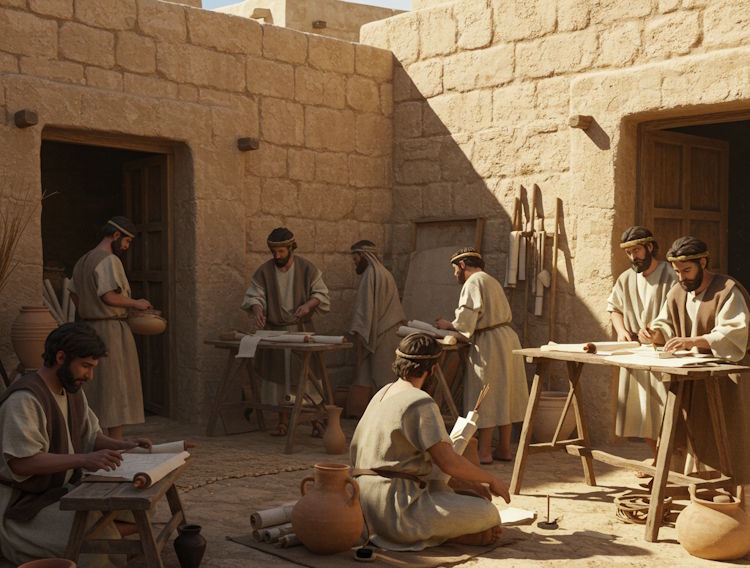
They were a strictly organized group. There were registers with the enrollment of each member, which were made according to an order also valid for the meetings: priests, Levites, Israelites, and proselytes. There are prescriptions that precisely regulate admission to the community. Only adults could be admitted to the number of those inspected, and the minimum age to enter the congregation was 20 years old.
Before entering the order, the aspirant had to pass outside of it for a year of probation, during which he had to live in fidelity to the law and then a two-year novitiate. During the first year, the seriousness of the novice’s purpose was assessed, and he was indoctrinated in the precepts of the community. During this time, he lived, so to speak, on the threshold, in accordance with the community’s norms. He retained his property and could not yet participate in the plenary assemblies or the community’s sacred meals. After this period, if he was deemed worthy of the community, his assets passed to its administration, but he was still kept separate from the common property. His abilities and his work now belonged to the community. At the novice’s acceptance, which took place on the feast of the renewal of the Covenant, he took a solemn oath.
The organization of the community conformed to the division of the Jewish camp and army into thousands, hundreds, and tens, according to hierarchical criteria. There were four classes. In this organization, the priests and Levites played a special role, but there were also ministries for the laity. The order was governed by a commission of twelve lay members and three priestly members. Each had their own rank and held their position, which was determined by their age, knowledge, and effectiveness. They observed strict discipline among themselves and paid total obedience to their superiors. Any violation of these precepts and the precepts was severely punished. The community council had judicial powers over its members, and there was a penal law that enumerated what was considered fault among its members.
They placed great importance on ritual purity, washings, and ritual baths, much more than the Pharisees. Baptism was an obligatory rite every year. There were very important ritual purifications, such as the one performed before meals. For all these rituals, the monasteries had cisterns, baths, and pipes to supply the necessary water.
They had a strong sense of community. They ate together, held all property in common, and any profits became part of the community’s monetary deposit, which was administered equitably among the members. They lived in total austerity and poverty. They always wore the same clothing and footwear, lacked any luxuries, and everything was regulated with the utmost sobriety.
Regarding their customs, they had no slaves, never swore oaths except on the day of admission, refused anointing with oil, bathed in cold water before each meal, and after contracting any impurity, they relieved themselves in secluded places that they then covered so as not to contaminate the dwelling. They did not prohibit marriage but usually lived celibately.
Regarding government, an inspector (mabaqqer), aged over 30 and under 50, headed each camp. It is a scribe who teaches the exact meaning of the law, since great importance was placed on knowledge of the scriptures, and who had to go to reveal the faults committed.
The Essenes called themselves “the converts of Israel,” “the converts of the desert,” or “the men of God’s counsel.” They considered themselves the true remnant of the loyal people of Israel, “the few” who would be saved by God at the end of time.
Their doctrine and their vision of themselves are based on the core of their teachings: everything that happens in the world is foreseen by God. They maintain an eschatological vision of time. The moment when God would reestablish Israel as a light to the nations was near. They believed in the coming of the Messiah and Elijah. They specialized in doctrines about angels and spirits. The doctrine about the spirit of truth or light and the spirit of injustice or darkness, which reminds us of the Gospel of John, is their work. They also believe that man receives the spirit of God at birth, which, after being purified from his stains in this life, is renewed by the Holy Spirit of God, transforming man into a son of truth and light, and through a third spirit, into a son of heaven equal to the angels. The biblical figure of Melchizedek, the priest who belonged to the priestly lineage, takes on importance in their doctrine.
The Essene communities (yahad) maintained a different Covenant with God than the common Jewish people. It is a Covenant within the community. That is why their most important annual celebration is the Feast of the Renewal of the Covenant, a feast that was not celebrated in the same way or with the same meaning by the common Jewish people of Jesus’ time. That is why they also have a different calendar, solar rather than lunar, and the Essene Jewish festivals always fell on the same days of the week. With all this, they demonstrated their opposition to the authorities of the Temple in Jerusalem and their closed and rigid nature in the face of popular custom.
¶ The Therapists
This is a Jewish sect with very similar characteristics to the Essenes, so much so that researchers are even wondering whether they were not the same sect or a variant of it. Although they must have had communities everywhere, they were especially numerous in Egypt, especially near Lake Mareotis near Alexandria. They lived communally, but with men and women separating into different areas. Upon entering the order, they abandoned their possessions, and during their time there, they did not perform any paid work or occupation, as they dedicated themselves entirely to the contemplative life.
The communities were presided over by the oldest member, or priest. The hierarchy was based solely on the number of years of membership in the order. They lived celibately the entire time they remained there. They also took vows of poverty, having only one dress for the summer and another for the summer, eating frugally, abstaining from meat and wine, and fasting frequently.
Their usual day consisted of morning prayer facing the sun, a day of Scripture study and prayer, an afternoon communal meal, and a sunset prayer facing the east. On Saturday, the president held worship and delivered a sermon. Their most important festival, like the Essenes, was the Feast of Weeks or Pentecost. On this day, they ate their sacred food, leavened bread seasoned with salt and hyssop, surpassing in their degree of abstinence even the Jewish priests, who at least drank wine on this day. They then sang hymns until nightfall.
¶ The Nazirites
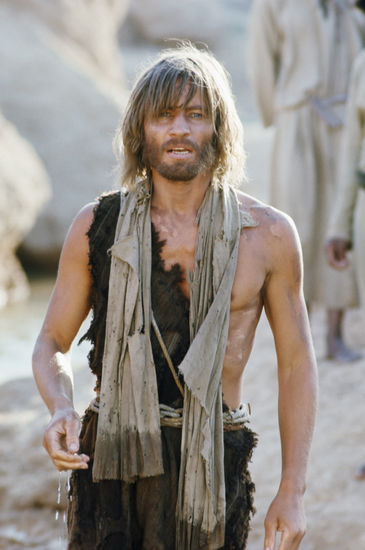
The Nazirites were a small brotherhood of men and women consecrated to God. They were held in high regard because only they could have access to the Holy of Holies in the temple, next to the high priest.
They lived in small communities where everything was held in common. To join the order, people had to take lifelong vows: they had to abstain from all alcoholic beverages and all unfermented fruits of the vine; they had to let their hair grow freely; They would not approach places where dead people had been, nor would they touch any dead person or anything that had been in contact with a dead person. These three things were considered at that time to cause an impurity that prevented one from being completely pure in God’s presence.
The vow could also be for a period of time, at the end of which they would purify themselves for seven days (Num 6:9; Acts 21:27), cut their hair and burn it, and also partake of certain offerings, including unleavened bread and oil. When the vow was fulfilled, they could once again drink wine and eat grapes. Women usually took the vow voluntarily for the purpose of making a special request to God, or to dedicate themselves to some special purpose. There are biblical examples of the vow being for life (Judges 13:5). A vow was often made in thanksgiving to God; its purpose was not to replace weakness of character in the sense that someone needed the vow to be aligned with God’s path.
Incidentally, we should not confuse the words Nazirites and Nazarene. The word Nazirite comes from the root nazir, meaning “separated” or “away from,” while Nazarene denotes a resident of Nazareth. Confusing the words, some have argued that Jesus Christ was under a Nazirite vow, and they use that reasoning to argue that this is why he had long hair. But Jesus was not a Nazirite because he drank wine (Matthew 11:18-19) and on at least one occasion touched a dead body (Luke 8:51-54). Thus, he could not have had long hair (1 Corinthians 11:14). The apostle Paul took a Nazirite vow, not cutting his hair until he had completed it (Acts 18:18). He later shared in the purification rites with four others who had completed Nazirite vows (Acts 21:23-27).
The admission ceremonies took place at the headquarters of each district. These ceremonies were to be completed with a series of offerings and sacrifices at the temple in Jerusalem.
These vows were very solemn and conferred a very high distinction on those who adopted them. Samson and Samuel were two illustrious Nazirites. Anyone who was not faithful to their vows was expelled from the order. If they committed any sin, they were required to purify themselves and offer sacrifices to compensate.
The colonies where they met were authentic centers of learning. They were men who studied the scriptures deeply, led a very monastic rural life, almost in the style of the Essenes, and earned their living from the fruits of the fields and livestock, as well as from the gifts that wealthy Jews frequently made to the order. Each colony was headed by a director. In many aspects of their organization, the Essenes copied these simple brotherhoods or communities.
They were very small in number. The little more than five colonies that there were meant about 300 Nazirites (Bereshit Rabbah 91:3).
The law of Naziriteship is described in Numbers 6.
¶ The prophetic communities
They are not true monastic communities, because they do not contemplate separation from the world, celibacy, and a common rule.
They have existed since the time of Samuel (1 Sam 10:5-6; 10:10-13; 19:20-24), they reached their maximum splendor in the time of Elijah (1 Kings 18:4; 18:13; 18:19-20; 20:35) and they endured until the time of the prophet Amos (Am 7:14), to disappear in exile (Zech 7:3; Neh 6:10-14).
They were independent, itinerant communities. They revolved around a prophet considered “Father.” They lived poorly, either through their own labor or from public charity (2 Kings 4:8; 4:38-44; 6:1-7). Continence could exist, but was not obligatory (2 Kings 4:1).
They were linked to sanctuaries such as Naioth near Ramah (1 Sam 19:18-24), Bethel (1 Sam 10:3-6), Jericho (2 Kings 2:3), Mount Carmel (2 Kings 2:25). With David they settled in Jerusalem, becoming a body of Levite-prophets. Its members were from the lower classes of society.
¶ Political movements or forces
¶ The Zealots
The history of Israel between the Maccabean uprising and the war against the Romans is full of resistance movements. The Zealots are precisely that, a resistance group against the invaders. Its founder is a certain Judas the Galilean, and its origins stem from the census and subsequent tax collection that took place around the time of Jesus’ birth, and the latter in his adolescence.
Their resistance was not based solely on armed action, but also on the promulgation of a series of subversive doctrines, never before proclaimed, which soon gave its members a coherent set of principles and unity. The movement originated in Galilee, although the greatest agitation over tax payments took place in Judea, and then spread northward.
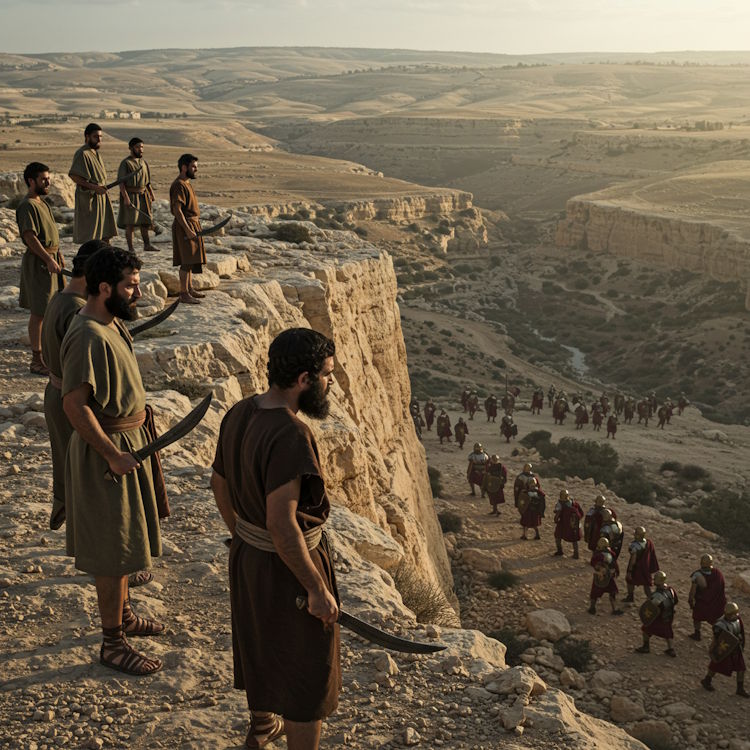
In the beginning, the Pharisaic forces played an important role; it seems that it was mainly the disciples of Rabbi Sammay who swelled the ranks of Zealotism, while the Hillellites, who finally rose to preponderance in the rabbinate after the war, adopted a negative attitude towards this movement, and were unable to impose themselves on the Sammayites. The proximity with the thought of the Essenes is also very evident. They hold very similar views on prophetic matters, eschatologies, and doomsday wars. It’s quite possible that many of the Essenes became zealots over time.
The name Zealots or Zealots speaks of their zeal for God and their fiery passion in discussing matters of the Last Judgment and eschatological wars. To the Romans, they were nothing more than thieves, isolated highwaymen, or entire gangs of bandits. They paid little attention to them until finally forced to do so by the Jewish uprising. The designation Sicarii, on the other hand, does not seem to include all Zealots, but only a particularly active group; the name derived from the small daggers (sica) they carried hidden under their cloaks and with which they murdered their adversaries, often in the midst of the crowd. They seem to have concentrated mainly in Judea and Jerusalem. They were the last remaining resistance fighters at the Masada fort.
The doctrine with which they justified and waged the struggle was decisive for them. Its central point is their interpretation of the First Commandment. In their view, the kingdom of God in Israel was incompatible with any domination. Their revolutionary spirit lay in this fundamental dogma. For centuries, Israel had lived under foreign domination and under it had served its God, accepting it as something God permitted or as a punishment. The Zealots broke with this, and from this break arose their zeal for God’s exclusive monarchy and their resolve to endure persecution, if necessary, as well as to sacrifice their money, property, or life for their faith. Their readiness to suffer and their fortitude in martyrdom aroused the admiration of their enemies. Through martyrdom, they proclaimed their zeal for God and atoned for Israel’s sins. Conversion among them took the grave form of refusing obedience to earthly powers and accepting only God’s law. The impact of this doctrine was all the greater because it sprang from the very core of Jewish beliefs: in Jesus’ time, the first commandment was cited alongside the sema of Israel, and the rabbis did not consider any prayer valid in which God lacked the name of king. (If not, recall the third phrase of the Lord’s Prayer, as a Jewish prayer of Jesus.)
Judas formulated this decisive part of his doctrine in response to the census ordered by Octavian Augustus. The Romans upheld the legal principle that, with the conquest of a country, its lands became the property of the Roman State, the usufruct of which was then left to the indigenous people. They based their taxation on this principle. But this axiom conflicted with the Israelite belief that the Holy Land had been given by God as an inalienable inheritance to Israel. Obedience to God’s commandment therefore prohibited the Zealots from adhering to the Roman legal principle, and they interpreted participation in the census as such. The irritation aroused among the people by the high amount of taxes and the harshness of their collection contributed to the acceptance of the Zealot thesis. Regarding the census, the Zealots said, “Taxation brings with it nothing but obvious slavery,” and therefore, they exhorted all the people to protect their freedom. The war was unleashed precisely by the Zealots’ elimination of the tax collectors.
The sole monarchy of God, as preached by Judas, was closely intertwined with Israel’s freedom and its hostility toward Rome. The Zealots’ notion of freedom was conditioned by eschatological considerations. By freedom was meant the end-time redemption, for which all pious Israelites prayed daily. While the Pharisees hoped it would be realized through a miraculous intervention from God in the first instance, the Zealots were convinced that the exclusive reign of God should be initiated by the people of Israel, and God would then respond to their heroic actions with signs and miracles to make the work of liberation successful.
The Zealots’ efforts to turn their creed of the exclusive reign of God into reality developed in different ways. They abhorred images in all their forms, whether images of men, especially rulers, or images of animals, which for the most part had a symbolic meaning. The nascent emperor cult decisively fostered opposition to Rome; images of the Emperor were the ones that caused the greatest scandal. Lynchings became the general rule against impurities and desecrations perpetrated within the temple precincts. The Zealots’ vengeance also fell on Israelites who joined non-Jewish women. People were forced to be circumcised, or else they were killed without any consideration. Prophets and false Messiahs accompanied the Zealots on their journey: it was a prophetic preaching that triggered a massacre by Pilate.
Their social stance was revolutionary. They opposed the rich and won the friendship of the poor, the small peasants, and landowners, while the large landowners allied themselves with the Romans. The social situation worsened steadily. The poor resented this, and the small peasants feared for their land. They had to take out loans and mortgage their land, until it fell into the hands of the large landowners and their tenants, and then to the Romans. The Zealots therefore continued to commit acts of violence against the Romans and their friends.
In all this hectic world, it is no wonder that Jesus was mistaken for a supposed Messiah of those who proliferated at the time, that he was crucified between two Zealots (LU 187:4.5), and that even the Sanhedrin accused him of provoking revolts to earn the enmity of the Romans. No doubt Jesus often had to endure comparisons with the Zealots, and not only that, but the contrary accusations of being on the side of the Romans. In such a turbulent time, it was not easy to live above suspicion, no matter one was on one side or the other.
¶ The Herodians
This group was also a political party that proposed the expulsion of Roman power from Palestinian lands, but in this case by the establishment of Herodian royalty. They were a not very numerous group of relatives and supporters of Herod’s royal family; Its members, Jews by birth, were pagans at heart. However, this did not make them despised by the people, as they had the Sadducees as allies. Like them, they lived in a privileged position, were rich, and also skeptical. For this reason, they did not believe the views of the Zealots, who were supported by the Pharisees and were both zealous defenders of the law. It could be said that the Herodians represented the political party of the rich, while the Zealots represented the party of the poor. Their number, however, was always much more limited than that of the Zealots.
During his life, as is clear from the Gospels (Mk 3:6, Mt 22:16), Jesus had to confront them in some situations.
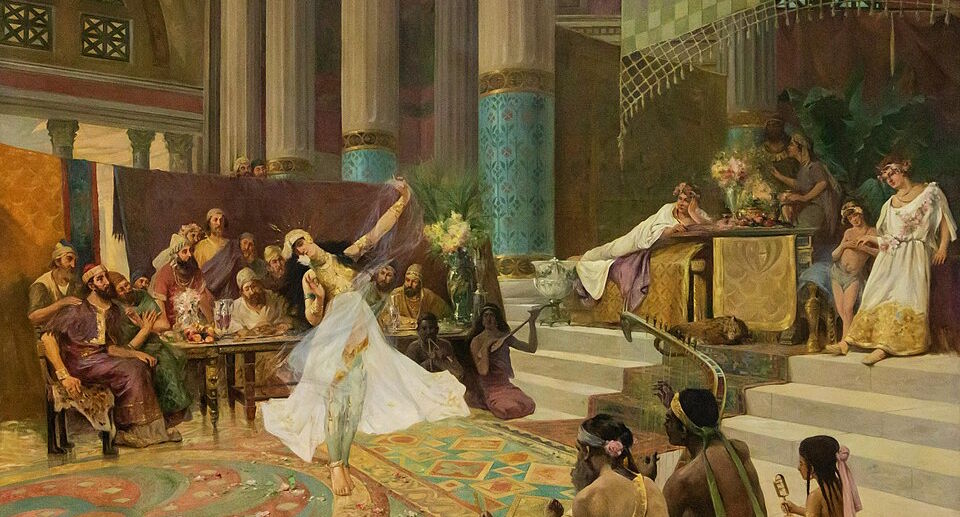
¶ The Samaritans
The Samaritans were a mixed Jewish-pagan people who lived in a small territory between Judea and Galilee called Samaria. The attitude of the Jews toward these non-Jewish neighbors was one of total contempt.
This feeling of enmity between Jews and Samaritans arose in the following way: about 700 years before our era, Sargon, king of Assyria, after crushing a revolt in central Palestine, carried off more than 25,000 Jews from the northern kingdom of Israel into captivity and settled in their place an almost equal number of descendants of the Cuthites, Serfavites, and Amatites. Later, Ashurbanipal sent additional groups of settlers to Samaria. The religious enmity between Jews and Samaritans dated back to the return of the former from captivity in Babylon. On this occasion, the Samaritans actively tried to prevent the rebuilding of Jerusalem. Later, they offended the Jews by offering aid to Alexander’s armies. In return for their friendship, Alexander gave the Samaritans permission to build a temple on Mount Gerizim, where they worshipped Yahweh and their tribal gods and offered sacrifices, all very much in the manner of the temple services in Jerusalem. They continued to practice this cult until the time of the Maccabees, when John Hyrcanus, around 129, destroyed their temple on Mount Gerizim. There was perhaps a slight improvement in the situation towards the end of the first century BC. Herod married a Samaritan woman, trying to unite the two peoples, but twelve years after Herod’s death, under the procurator Coponius (6-9 AD), when Jesus was still alive, tempers flared again. At a Passover festival, in retaliation for an act of Jewish revenge, the Samaritans desecrated the temple in Jerusalem by spreading human bones in its porches. This extremely serious desecration, which probably resulted in the interruption of the feast, provided new fuel for the old enmity. From this moment on, the hostility between the two groups became unstoppable.
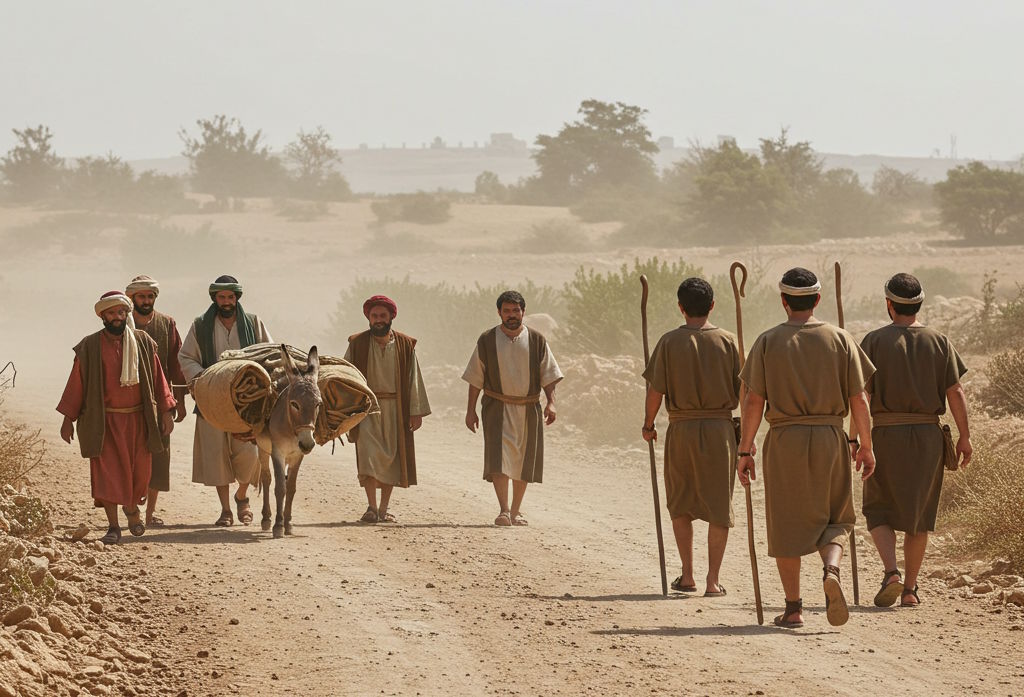
When the Jews of Galilee went to Jerusalem, especially during the festivals, it was certainly their custom in Jesus’ time to go around Samaria, although sometimes it was unavoidable to go through it because the detour made the journey much longer. There were always incidents, even bloody encounters. Tempers were very tense on both sides. As we move beyond the time of Jesus, the situation calms down, and relations between the two peoples improve greatly.
Hence it is surprising that Jesus passes through Samaria to preach there (LU 143:0.1), or that on one of his travels among the Samaritans he is despised in a village, refused lodging, and yet Jesus refuses to take any action in retaliation (LU 162:0.2). This contact between a Jew and the Samaritans was not common at that time.
The Samaritans hated the Jews to death, and the latter called the Samaritans Cutheans, and the word “Samaritan” was a grave insult in the mouth of a Jew.
The Samaritans attached great importance to the fact that they were descended from the Jewish patriarchs. This claim was denied: they were Cutheans, descendants of Medo-Persian settlers who were foreign to the people. They were also denied any blood ties with Judaism, and vice versa by the Samaritans. The fact that they recognized the Mosaic Law and scrupulously observed its prescriptions did not change their exclusion from the community of Israel, for they were suspected of idolatrous worship because of their veneration of Mount Gerizim as the sacred mountain.
This judgment on the Samaritans had a consequence: they were considered pagans from a cultic and ritual point of view. For them, following the events of Passover, the doors of the temple were closed. Because of this, marriage between the two peoples was prohibited, and they were even considered impure from birth and causes of uncleanness, which prohibited contact with them.
However, the reality was often very different. Many Jews lived without problems among Samaritans, and vice versa. It is in this context that Jesus’ famous parable must be understood: he held up a Samaritan to his fellow countrymen as a model of behavior and love for one’s neighbor, someone who triumphed over the deep-rooted nationalist hatred (LU 164:1).
¶ References
- Joachim Jeremiah, Jerusalén en tiempos de Jesús (Jerusalem in the Time of Jesus), Ediciones Cristiandad, 1977, pp. 261-281.
- Emil Schürer, Historia del pueblo judío en tiempos de Jesús (History of the Jewish people in the times of Jesus), Ediciones Cristiandad, 1985, pp.497-537.
- Wikipedia, fariseos
- Wikipedia, saduceos
- Wikipedia, esenios
- Wikipedia, nazareos
- Wikipedia, zelotes
- Wikipedia, herodianos
- Wikipedia, samaritanos